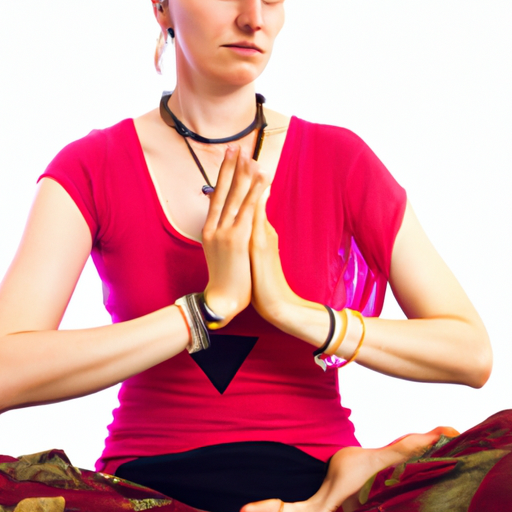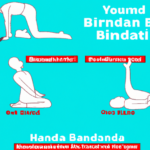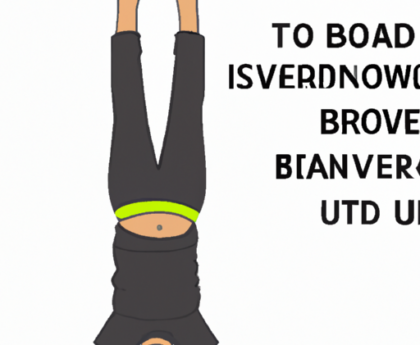“Unlock your inner potential with Hatha Yoga!”
Introduction
Hatha Yoga is one of the Yoga paths which is an ancient practice that has been used for centuries to promote physical and mental wellbeing. It is a form of yoga that focuses on physical postures, breathing techniques, and meditation. Hatha Yoga is a great way to improve your overall health and wellbeing, as it helps to reduce stress, improve flexibility, and increase strength and balance. It is also a great way to connect with your inner self and find peace and relaxation. Hatha Yoga is suitable for all levels of fitness and experience, and can be adapted to suit individual needs.
The Benefits of Hatha Yoga for Beginners
For beginners, Hatha yoga can be a great way to start a yoga practice. Here are some of the benefits of Hatha yoga for beginners.
First, Hatha yoga can help to improve flexibility and strength. The physical postures of Hatha yoga are designed to stretch and strengthen the body. This can help to improve overall flexibility and strength, which can help to reduce the risk of injury and improve overall health.
Second, Hatha yoga can help to reduce stress and anxiety. The breathing techniques and meditation practices used in Hatha yoga can help to reduce stress and anxiety levels. This can help to improve overall mental wellbeing and can help to reduce the risk of depression and other mental health issues.
Third, Hatha yoga can help to improve posture. The physical postures of Hatha yoga can help to improve posture by strengthening the core muscles and improving balance. This can help to reduce back pain and improve overall posture.
Finally, Hatha yoga can help to improve concentration and focus. The breathing techniques and meditation practices used in Hatha yoga can help to improve concentration and focus. This can help to improve overall productivity and can help to reduce the risk of distraction and procrastination.
Overall, Hatha yoga is a great way for beginners to start a yoga practice. It can help to improve flexibility and strength, reduce stress and anxiety, improve posture, and improve concentration and focus. For these reasons, Hatha yoga is an excellent choice for beginners.
Exploring the Different Types of Hatha Yoga
Hatha yoga is a form of yoga that focuses on physical postures and breathing techniques. It is one of the most popular forms of yoga practiced in the West, and is a great way to improve physical and mental health.
Hatha yoga is divided into four main types: Raja, Karma, Jnana, and Bhakti. Each type has its own unique approach to yoga practice.
Raja yoga is the most traditional form of Hatha yoga. It focuses on the eight limbs of yoga, which include ethical guidelines, physical postures, breathing techniques, and meditation. Raja yoga is designed to help practitioners reach a higher level of spiritual awareness.
Karma yoga is a form of Hatha yoga that focuses on selfless service. It is based on the idea that by performing acts of service, one can achieve spiritual growth. Karma yoga is often practiced in conjunction with other forms of yoga, such as Raja yoga.
Jnana yoga is a form of Hatha yoga that focuses on the study of philosophy and spiritual texts. It is designed to help practitioners gain a deeper understanding of the world and their place in it.
Bhakti yoga is a form of Hatha yoga that focuses on devotion and love for a higher power. It is designed to help practitioners cultivate a deeper connection with their spiritual source.
No matter which type of Hatha yoga you choose to practice, it is important to remember that all forms of yoga are beneficial. Each type of yoga has its own unique approach to helping practitioners reach their goals. It is important to find the type of yoga that works best for you and your lifestyle.
How to Incorporate Hatha Yoga into Your Daily Routine
Hatha yoga is an ancient practice that has been used for centuries to promote physical and mental wellbeing. It is a form of yoga that focuses on physical postures, breathing techniques, and meditation. Incorporating Hatha yoga into your daily routine can help you to reduce stress, improve your physical health, and increase your overall wellbeing. Here are some tips on how to incorporate Hatha yoga into your daily routine.
1. Start with a few basic poses. Before you begin your practice, it is important to familiarize yourself with some basic poses. Start with poses such as the mountain pose, the downward facing dog, and the cobra pose. These poses are easy to learn and can help you to build a foundation for your practice.
2. Set aside time for your practice. It is important to set aside time each day for your practice. This will help you to stay consistent and ensure that you are getting the most out of your practice. Try to set aside at least 15 minutes each day for your practice.
3. Focus on your breathing. Breathing is an important part of Hatha yoga. Make sure to focus on your breathing as you move through each pose. This will help you to stay present and mindful of your practice.
4. Incorporate meditation. Meditation is an important part of Hatha yoga. Make sure to set aside time each day for meditation. This will help you to clear your mind and relax your body.
By incorporating Hatha yoga into your daily routine, you can reap the many benefits of this ancient practice. Start with a few basic poses, set aside time for your practice, focus on your breathing, and incorporate meditation. With a consistent practice, you can experience improved physical and mental wellbeing.
The History and Origins of Hatha Yoga
Hatha yoga is an ancient practice that has been used for centuries to promote physical and mental wellbeing. It is a form of yoga that combines physical postures, breathing exercises, and meditation. The word “hatha” is derived from two Sanskrit words: “ha” meaning “sun” and “tha” meaning “moon.” This reflects the balance of opposites that is at the heart of the practice.
The origins of Hatha yoga can be traced back to the 15th century in India. It was developed by Yogi Swatmarama, a Hindu sage, who wrote the Hatha Yoga Pradipika, a text that outlines the practice of Hatha yoga. In this text, he outlines the four main paths of yoga: Karma yoga (the path of action), Bhakti yoga (the path of devotion), Jnana yoga (the path of knowledge), and Raja yoga (the path of meditation).
Hatha yoga is based on the principles of Patanjali’s Yoga Sutras, which were written in the 2nd century BC. These sutras outline the eight limbs of yoga, which are the foundation of the practice. The eight limbs are: yama (moral codes), niyama (self-discipline), asana (postures), pranayama (breath control), pratyahara (withdrawal of the senses), dharana (concentration), dhyana (meditation), and samadhi (enlightenment).
Hatha yoga is a practice that is designed to bring balance and harmony to the body and mind. It is a practice that can be used to improve physical health, mental clarity, and emotional wellbeing. It is a practice that can be used to cultivate a sense of inner peace and connection to the divine.
The Benefits of Hatha Yoga for Stress Relief
Hatha yoga is an ancient practice that has been used for centuries to promote physical and mental wellbeing. It is a form of yoga that focuses on physical postures, breathing techniques, and meditation. It is a gentle form of yoga that is suitable for all levels of fitness and experience.
The practice of Hatha yoga can be beneficial for stress relief. Stress is a common problem in modern life, and it can have a negative impact on physical and mental health. Hatha yoga can help to reduce stress levels by calming the mind and body.
The physical postures of Hatha yoga can help to reduce tension in the body. By stretching and strengthening the muscles, Hatha yoga can help to reduce physical tension and improve flexibility. This can help to reduce stress levels and improve overall wellbeing.
The breathing techniques used in Hatha yoga can also help to reduce stress. By focusing on the breath, practitioners can become more aware of their body and mind. This can help to reduce stress levels and improve mental clarity.
The meditation techniques used in Hatha yoga can also be beneficial for stress relief. By focusing on the present moment, practitioners can become more aware of their thoughts and feelings. This can help to reduce stress levels and improve overall wellbeing.
In conclusion, Hatha yoga can be beneficial for stress relief. The physical postures, breathing techniques, and meditation techniques used in Hatha yoga can help to reduce stress levels and improve overall wellbeing. For those looking for a gentle form of exercise to reduce stress, Hatha yoga may be an ideal choice.
Tips for Incorporating Pranayama into Your Hatha Yoga Practice
1. Start with a few rounds of Ujjayi Pranayama: Ujjayi Pranayama is a great way to begin your Hatha Yoga practice. It helps to calm the mind and prepare the body for the physical practice. To practice Ujjayi Pranayama, sit in a comfortable position and take a few deep breaths. On the inhale, constrict the back of the throat to create a soft “ha” sound. On the exhale, release the constriction and allow the breath to flow out naturally.
2. Incorporate Nadi Shodhana Pranayama: Nadi Shodhana Pranayama is a great way to balance the energy in the body and to help focus the mind. To practice Nadi Shodhana Pranayama, sit in a comfortable position and close your right nostril with your right thumb. Inhale deeply through your left nostril and then close it with your ring finger. Exhale through your right nostril and then inhale through the same nostril. Repeat this pattern for a few rounds.
3. Practice Bhramari Pranayama: Bhramari Pranayama is a great way to reduce stress and anxiety. To practice Bhramari Pranayama, sit in a comfortable position and close your eyes. Inhale deeply and then exhale while making a humming sound. Focus on the sound and the vibration it creates in your body.
4. Incorporate Kapalabhati Pranayama: Kapalabhati Pranayama is a great way to energize the body and to help clear the mind. To practice Kapalabhati Pranayama, sit in a comfortable position and take a few deep breaths. On the exhale, forcefully contract the abdominal muscles and then relax them on the inhale. Repeat this pattern for a few rounds.
By incorporating these four pranayama techniques into your Hatha Yoga practice, you can experience a deeper level of relaxation and focus. Pranayama can help to balance the energy in the body and to prepare the mind and body for the physical practice.
Conclusion
Hatha Yoga is an ancient practice that has been used for centuries to promote physical and mental wellbeing. It is a gentle form of yoga that can be adapted to suit any level of fitness and experience. It is a great way to improve flexibility, strength, and balance, as well as reduce stress and anxiety. With regular practice, Hatha Yoga can help to improve overall health and wellbeing.




